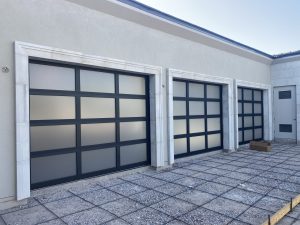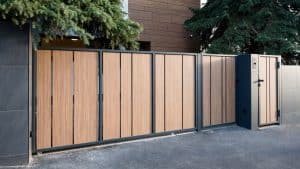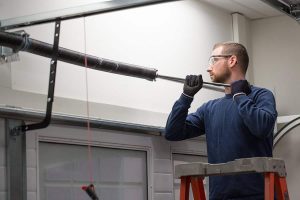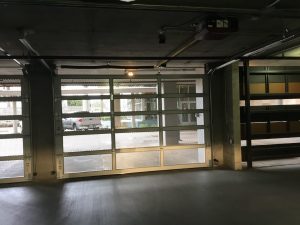Garage doors are more than just entryways—they are essential for security, convenience, and home value. Among their many moving parts, the garage door cables play a critical role in ensuring smooth and safe operation. However, garage door cable issues often go unnoticed until something goes wrong, potentially leading to costly repairs or safety hazards. In this blog, we’ll explore everything you need to know about garage door cable maintenance, the signs of wear, and how homeowners can prevent breaks through routine upkeep.
Understanding the Role of Garage Door Cables
Garage door cables are heavy-duty wires that work in conjunction with springs to lift and lower the garage door. They’re typically found on either side of the door and are wound around drums or pulleys. These cables handle immense tension, and any damage or failure can instantly render the garage door inoperable—or worse, dangerous.
Cables are integral to the door’s counterbalance system. When properly tensioned and in good condition, they ensure the door opens smoothly and remains balanced. If a cable snaps or frays, it can cause the door to slam shut or lean to one side, posing serious risks to people, pets, and property.
Common Causes of Garage Door Cable Problems
Several factors can contribute to garage door cable issues. Understanding these causes can help you implement proactive solutions.
- Wear and Tear from Daily Use
Garage doors can cycle up and down multiple times a day. Over time, the friction, tension, and weight strain the cables, leading to fraying or stretching. - Rust and Corrosion
Exposure to moisture or chemicals in the garage can corrode the metal cables, weakening their integrity and increasing the likelihood of a snap. - Poor Installation or Alignment
If the garage door system isn’t properly installed or maintained, misalignment in the pulleys or drums can put uneven tension on the cables, causing premature damage. - Neglect of Regular Maintenance
Lack of lubrication, dirty tracks, or failure to spot early warning signs often leads to cable degradation. Regular inspections are essential to keep cables functioning as intended.
How to Maintain Garage Door Cables for Longevity
Maintaining garage door cables isn’t complicated, but it does require attention and consistency. Here’s how homeowners can protect their investment and prevent sudden cable breaks.
Conduct Regular Garage Door Cable Inspections
Monthly visual inspections can help you catch early signs of damage. Look for:
- Fraying wires along the length of the cable
- Rust or discoloration
- Loose ends or signs the cable is unraveling
- Unusual noises when opening or closing the door
- Cables hanging loosely or looking uneven
If you notice any of these signs, it’s best to call a professional before using the door again.
Apply Proper Lubrication to Prevent Friction
Cables, though not the primary component requiring lubrication, benefit from occasional light application of a silicone-based spray. This prevents corrosion and keeps the cables running smoothly across pulleys. Avoid using heavy grease, which can attract dust and create buildup.
Balance the Door to Reduce Cable Strain
An unbalanced garage door forces the cables to carry unequal tension, which accelerates wear. You can check the balance by disconnecting the opener and lifting the door manually. If it doesn’t stay halfway up, the balance may be off—this typically means the springs or cables need adjustment. Always call a professional for spring and cable tensioning, as these components are under extreme pressure.
Keep the Tracks Clean and Clear
Dirt, debris, and obstructions in the tracks can force the cables to work harder during door movement. Clean the tracks with a dry cloth and ensure they are aligned and free of grime. This helps the entire lifting system function more efficiently and protects the cables from undue stress.
Signs You May Need Garage Door Cable Replacement
Cables rarely fail without warning. Recognizing these indicators can help you act before a complete failure occurs:
- Fraying or Broken Strands: If you see any broken wires along the cable, it’s a clear sign that the cable is weakening and may break soon.
- Visible Rust or Corrosion: Rust significantly weakens the cable’s strength and is a signal that replacement is necessary.
- Door Jerks or Moves Unevenly: A door that rises crookedly or makes unusual jerky movements may be experiencing uneven cable tension due to stretching or fraying.
- Unusual Sounds: Clicking, grinding, or snapping noises when operating the door are a strong indicator that a cable is misaligned or beginning to fail.
Ignoring these signs can result in a sudden snap, which may cause the door to drop rapidly, putting your safety and your garage at risk.
Garage Door Cable Repair: DIY or Professional?
While some homeowners are comfortable performing minor garage door maintenance, cable repair or replacement is not a recommended DIY project. Garage door cables are under high tension and can cause serious injury if mishandled.
Professionals have the training, tools, and safety gear to replace cables safely and accurately. They can also assess the condition of your springs, drums, and opener to ensure everything works harmoniously. If you’re experiencing garage door cable issues, schedule a service before attempting any repairs yourself.
Integrating Cable Checks into Your Garage Door Maintenance Checklist
Cables should be a key element of your regular garage door maintenance checklist. Ideally, homeowners should:
- Inspect the cables monthly for signs of wear
- Schedule a professional inspection annually
- Lubricate moving parts—including pulleys and hinges—every six months
- Replace worn cables before they fail
- Avoid using the door if any cable issues are observed
Preventative garage door maintenance not only avoids emergency repairs but also extends the lifespan of your entire system.
How Garage Door Cable Maintenance Saves You Money
Many homeowners only think about garage door maintenance when something breaks. However, proactive care—especially for cables—can save hundreds in emergency repair costs. A snapped cable can also damage the rollers, track, opener, or panels, leading to a domino effect of problems.
Routine garage door cable maintenance and inspections cost far less than dealing with a failed system. Additionally, well-maintained cables reduce the load on your opener and springs, helping those components last longer too.
Why Garage Door Cable Safety Should Never Be Ignored
Garage door cables under tension can act like whips when they snap. This poses a major safety hazard to anyone standing nearby. In households with children or pets, the danger is even more pronounced. That’s why regular inspection and timely professional service are not just practical—they’re essential for safety.
Always be cautious around damaged or suspect cables, and never attempt to manually adjust or reconnect a cable that has come loose. Secure the area and call a certified technician immediately.
Conclusion: Keep Your Garage Safe with Preventative Cable Maintenance
Garage door cables are small components that perform a massive job. When they break, the results can be dangerous and expensive. The good news is that with regular inspection, maintenance, and the help of experienced professionals, cable failures are entirely preventable. Stay proactive with your garage door upkeep, and you’ll enjoy reliable, smooth operation for years to come.
If you’re unsure about the current condition of your garage door cables or need expert maintenance services in Arizona, trust the team at Stapley Action Garage Door. With decades of experience, fast response times, and a dedication to safety, we’re here to help you keep your garage door in top shape.
Call us today or schedule your inspection online—because garage door safety starts with Stapley Action Garage Door.









